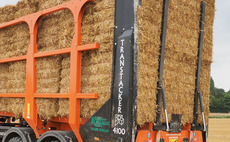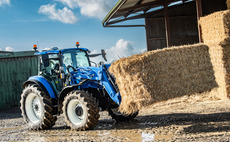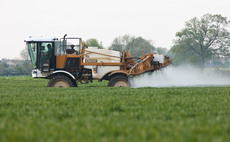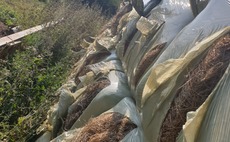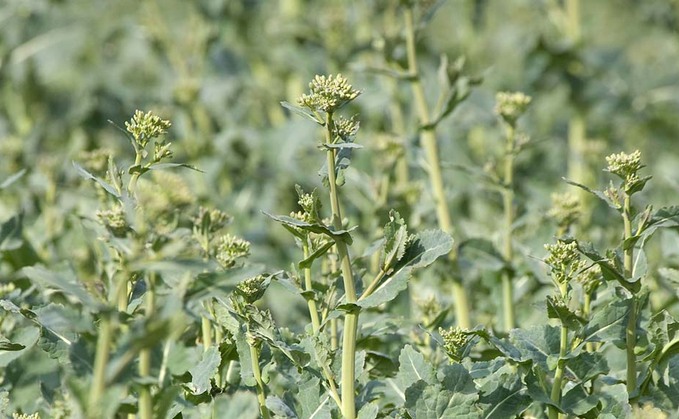
Oilseed rape crops have had a turbulent time in recent months with dry establishment conditions followed by high pest pressure and heavy frosts. Ãļ§Ö±²¥ finds out how to maximise crops this spring.
Ìý
With oilseed rape cropsÌýat such varying levels of growth and development across the country, decisions need to be made on how to manage the crop or in some cases decide if it is worth further investment.
Ìý
According to Alice Cannon, Lincolnshire-based Hutchinsons regional technical support manager, around a third of OSR crops look fantastic, but most are still sitting compactly, just beginning to show signs of branching out and elongating.
Ìý
“There are also those crops that looked well coming out of January but have since been devastated by CSFB or rape winter stem weevil. Unfortunately for crops in this situation, it is important to question the viability of the crop going forward particularly considering where market prices currently sit,” she says.
Ìý
Ìý
Ìý
Yield contributors
AHDB research shows there are five main considerations that contribute to high yields in OSR; four of these are managed through manipulation of the crop so should be taken into account when deciding how to manage the crop going forward.
Ìý
“Nitrogen and plant growth regulators are the best tools for manipulating canopy size.
Ìý
“Firstly aim for a GAI of 3.5 at flowering for the right number of podsÌý– this is the primary function of the PGR and a 5cm reduction in height can be easily achieved. PGR applications also help to promote more even and well-structured branching.
Ìý
“It is important to keep the crop standingÌý– lowering crop height will help to reduce lodging.
Ìý
“PGRs also help to synchronise flowering, reducing light reflectance subsequently improving light capture by crop canopy which allows even development of pods and seed. Plants should also be kept disease free.”
Ìý
For those crops that are slightly backward, with a GAI less than 0.8, there is no reason to use a PGR, Ms Cannon advised, and these crops can be manipulated through nutrition, particularly N,P, Zn.
Ìý
“However, crops with a GAI of 0.8 or above, are considered to be forward and these crops should be treated with 0.75-1 litres/hectare metconazole + mepiquat chloride or 0.5 litres/ha trinexapac-ethyl,” she says.
Ìý
“If you find yourself faced with forward rape crops of GAI 2 or greater you should use more robust rates of specific PGR products and considerÌýtank mixing with additional metconazole.”
Ìý
While triazoles have some growth manipulation they are less persistent and can be less consistent than specific PGR options, Ms Cannon adds.
Ìý
Ìý
Crop nutrition
Ìý
AHDB research shows there are five main considerations that contribute to high yields in OSR; four of these are managed through manipulation of the crop so should be taken into account when deciding how to manage the crop going forward.
Ìý
“Nitrogen and plant growth regulators are the best tools for manipulating canopy size.
Ìý
“Firstly aim for a GAI of 3.5 at flowering for the right number of podsÌý– this is the primary function of the PGR and a 5cm reduction in height can be easily achieved. PGR applications also help to promote more even and well-structured branching.
Ìý
“It is important to keep the crop standingÌý– lowering crop height will help to reduce lodging.
Ìý
“PGRs also help to synchronise flowering, reducing light reflectance subsequently improving light capture by crop canopy which allows even development of pods and seed. Plants should also be kept disease free.”
Ìý
For those crops that are slightly backward, with a GAI less than 0.8, there is no reason to use a PGR, Ms Cannon advised, and these crops can be manipulated through nutrition, particularly N,P, Zn.
Ìý
“However, crops with a GAI of 0.8 or above, are considered to be forward and these crops should be treated with 0.75-1 litres/hectare metconazole + mepiquat chloride or 0.5 litres/ha trinexapac-ethyl,” she says.
Ìý
“If you find yourself faced with forward rape crops of GAI 2 or greater you should use more robust rates of specific PGR products and considerÌýtank mixing with additional metconazole.”
Ìý
While triazoles have some growth manipulation they are less persistent and can be less consistent than specific PGR options, Ms Cannon adds.
Ìý
Particularly good results have been seen from applying YaraVita Brassitrel Pro - a combination of various micronutrients, including manganese, magnesium, boron and molybdenum - in the autumn, and again in spring, he adds.
Protecting oil bonuses
Ìý
OSR prices may have fallen from their approximate £600/tonne highs, but maximising oil content to optimise bonuses paid on top of yield is as important as ever.
Ìý
ProCam agronomist Daniel Hatchett says if an oil bonus pays 1.5 per cent of the cropÂ’s purchase price for every 1 per cent of oil content above 40 per cent, there is a lot to play for.
Ìý
“The key is to understand what influences oil production so agronomy can be geared accordingly. Oil content is affected by plant density, the number of pods per plant and the number of seeds per pod. For maximum oil content, photosynthesis must be maximised. Maintaining the correct amount of green area in the crop is therefore key.”
Ìý
Applying excessive N to push yield can adversely affect oil content, while severe sulphur deficiencies can also impact on both seed and oil yield.
Ìý
“For a tonne of seed yield, 15kg/ha of S is suggested to be needed. If S is deficient, as well as having yield implications, the chlorophyll content of seeds is raised and they turn green. This reduces quality for crushers and potentially oil content.
Ìý
“We know the disease sclerotinia can have a significant impact on yield, and controlling it with a robust fungicide at the correct flowering stage is critical. By utilising an SDHI and/or strobilurin for this, there is an additional greening benefit which is extremely useful in building yield – even in the absence of disease.”
Ìý
In addition, maximising light penetration throughout the crop is hugely important for photosynthetic activity, so checking the cropÂ’s green area index and selecting a fungicide with PGR activity is critical where canopies are overly thick, Mr Hatchett says.Ìý
Ìý
“The canopy can be optimised further by applying a biostimulant treatment containing nutrients and pidolic acid at yellow bud stage. This is because pidolic acid enables the crop to use N more effectively, helping to promote green leaf retention and chlorophyll content, both of which are crucial during pod-fill. Late N in OSR has been found to push yields and oil content. So a pidolic acid-containing treatment also fits well ahead of a later foliar N spray applied at mid-flowering.”
Ìý








